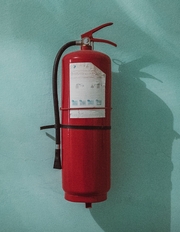3 Tips to Educate Your Children about Fire Safety
Children can learn and pick up much more than we give them credit for. This is to say that your child can receive an education on fire safety. Up until a certain age, parents must do everything to keep their child safe from fire.
However, children as young as three can understand fire hazards and preventive measures needed to stay safe. The United States Fire Administration (USFA) wants parents to educate their kids about the dangers associated with fire play.
As a parent, such an effort from your end can help prevent severe injuries and, in some cases, even fatalities. Wondering how to go about this? No problem! In this article, we will discuss three tips to educate your children about fire safety.
Practice Fire Drills
In the event of a tragic fire, your child must know what to do. This is why it is important to conduct fire drills. As a family, you should have a fire escape plan in place, which includes two ways in/out of every room.
In case of safe evacuation from a higher floor, install escape ladders. Have smoke alarms installed and educate them that when it rings, it’s a sign to start the home escape plan (not hide). If the room is filled with smoke, instruct them to get on their hands and knees to crawl to the nearest exit.
Once everyone has left the building and met at a pre-decided meeting spot, call your local emergency number or 911. Also, remind your children that they must only get back inside the property once advised to do so by a parent or firefighter.
Your family fire escape plan must be practiced at least twice a year in the form of a drill.
Teach Them about the Potential Hazards
From a young age, it is important to teach your kids about the hazards fire can cause. You can avail of opportunities while you and your little ones are near the stove or a burning candle. Let them close enough to experience the heat and tell them the danger of getting any closer.
Keep lighters and matches out of their reach, preferably in a locked cabinet. You can purchase lighters with child-lock features. Instruct your child to refrain from handling them without consulting an adult.
Despite their young age, you must teach your child about firefighters and their work. Perhaps visit a local fire department together so they can learn more about fire safety from the experts. However, as you teach them about this and the different types of firefighting foam, you must also make them aware of the hazards involved.
TruLaw notes that firefighting foam used to extinguish Class B fires (called Aqueous Film Forming Foam) is carcinogenic. This is mainly due to the presence of per and polyfluoroalkyl substances, or PFAS, a complex group of 12,000 chemicals.
These chemicals have caused such health and environmental concerns that there is an ongoing AFFF lawsuit against the manufacturers. This will caution your children and make them aware of the dangers firefighters deal with daily.
Make sure you are not living in proximity to firefighting training facilities or airports. Finally, give your child hope by telling them that PFAS production is banned from the end of 2025.
Create Burn Awareness in Them
When your children are very young, all you can do is take burn-preventative steps by keeping lighters out of reach, ensuring all electrical appliances are turned off, and so on. However, once they’re in grade school, you can teach them ways to protect themselves.
This does involve instructing them to keep away from matches and lighters but is not limited to it. In other words, teach them how to dial 911 and what to say. Let them know of safe cooking methods, including –
- Wearing close-fitted or short sleeves to avoid catching fire
- Never throw water on a grease fire
- Using oven mittens to lift or move lids and pans
- Not playing around while cooking
- Turning the pot handles to the back
- No fooling around or fighting near the stovetop
Also, teach your kids how to remain safe around heaters or fireplaces. As for electrical safety, instruct them to –
- Not climb electrical towers or poles (or even trees near power lines)
- Not fly kites anywhere near power lines
- Be careful around extension cords – do not step on them, overload them, or have them run under carpets or behind furniture.
As we close, let’s look at the shocking fire-related statistics. According to the National Safety Council, 3,790 civilian deaths occurred due to fires (along with 13,250 injuries). That same year, 1,504,500 fires broke out across the US.
In light of such figures, it is extremely crucial to teach children about fire safety from a young age. This will ensure their safety and give you peace of mind as a parent.
In Conclusion
Beyond warning children about the dangers of fire and how to protect, there are other ways to engage kids in fire education that are also fun. Teach kids about first responders who are trained to put our fires, the fire houses they work in, and the fire trucks they ride in. At home or in school, learning about fire doesn’t have to be all about the negatives. There are careers built around fire prevention and safety that are exciting for kids to explore.





